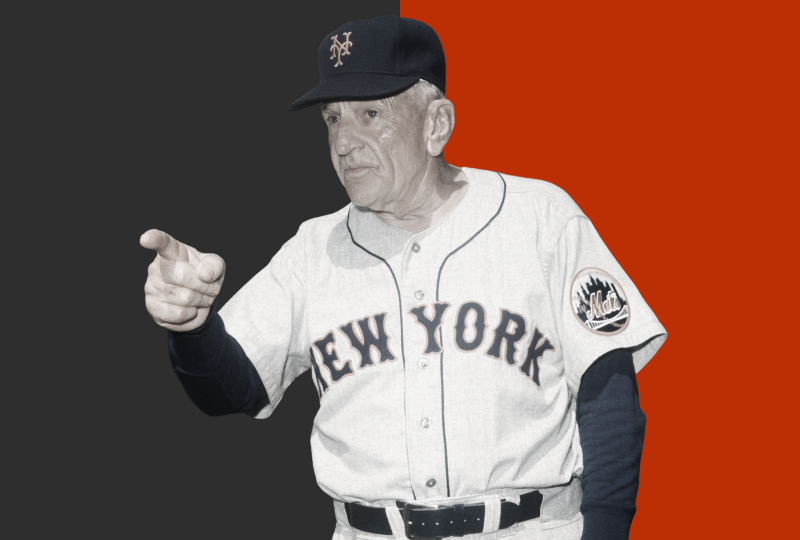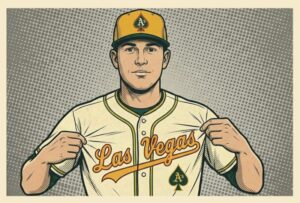By the 1950s, the business of baseball was changing quickly. In 1955, Connie Mack went public and admitted he barely had enough money to run the Philadelphia Athletics. He sold the team after the season, and the era of family-owned major league teams was dealt a big blow. A few years later, after the 1957 season, Dodgers owner Walter O’Malley moved his team to Los Angeles.
Realizing he would have a difficult go of it as the lone team in California, O’Malley played matchmaker between Giants owner Horace Stoneham and the city of San Francisco. Abandoning his plans to move the Giants to Minneapolis (the Giants were drawing terribly in the Polo Grounds), Stoneham agreed to flee for the west coast for the 1958 season. The Dodgers-Giants rivalry was transferred to the Golden State.
These events: the passing of the Mack dynasty in Philadelphia; the relocations of the Brooklyn Dodgers and New York Giants to California; as well as the move of the Boston Braves to Milwaukee in 1953; combined to create a new fever of opportunity in baseball. By the late 1950s, a group of wealthy businessmen chartered the Continental League, with the goal of competing with the American and National Leagues. They planned to enter markets that they felt were ready for major league baseball. That spurred MLB to consider expanding, especially to Minneapolis.
A few days after the 1955 World Series, baseball lost Clark Griffith, an indomitable personality who shaped baseball history from the late 19th century when he was a star pitcher, to his days as a manager, and finally as owner of the Senators. One of his favorite players was Mickey Vernon, who played for “The Old Fox” for 14 seasons. When Griffith passed away, control of the Senators passed to Calvin Griffith, who was actually his nephew, but whom he had adopted as a son. Calvin almost immediately started to woo cities for a relocation, eying Minneapolis, Los Angeles, Louisville, and San Francisco. When the Dodgers and Giants beat him to the west coast, Griffith began earnest conversations with the Twin Cities to relocate his Senators by 1960.
What was the Continental League?
The Continental League was a headache for Major League Baseball. Not just because they were competition, but because their wealthy backers were threatening to sue MLB over anti-trust violations. For years, the major league owners had carved up the U.S. map into spheres of territorial rights. The Continental League threatened to upend that unfair business practice. The antitrust exemption baseball had enjoyed for decades was on shaky ground, and Griffith’s efforts to move the Senators wasn’t making the “real” Senators in D.C. happy either.
On July 27, 1959, the Continental League formally announced their intentions to launch their first season in 1961. There would be teams in Denver, Houston, Minneapolis–St. Paul, New York City, and Toronto. Continental League owners intended to scout and sign young free agents and to go after established MLB players who were not under contract. The de facto leader of the Continental League was a lawyer named William Shea, who had answered a request from New York mayor Robert Wagner to form a group to return National League baseball to the city after the Dodgers and Giants left. Shea planned to operate the New York franchise in the Continental League, and he planned to spend money to make it a rival team to the Yankees.
Mets were born out of spite
Facing real competition for the first time since the Federal League in the mid-1910s, MLB responded with a daring plan to expand by four teams in 1961 and 1962. The American League would add a team in Los Angeles, giving that league a footing in the southern California market. They also agreed to create a new expansion franchise in Washington D.C., to replace Griffith’s Senators, who were moving to Minneapolis for the 1961 season. The National League would expand into Houston, and under a lucrative agreement, return a franchise to New York, under ownership of Shea, who was given a sweetheart expansion fee.
The Angels and (new) Senators debuted in 1961, and in 1962 they were joined by the Mets and Colts (later named the Colt .45s, and finally the Astros). The addition of four teams, and the relocation of three teams in the span of five years was the biggest shakeup in the post-1900 history of the majors. With the population of the U.S. having boomed after World War II, it was appropriate to expand: in 1940 there were 330,000 people for every player in Major League Baseball; by 1960 there were 450,000. By 1969, when MLB added four additional teams for a total of 24, there were 320,000 people for every big league player, returning the ratio to where it had been for so many years. The country was growing quickly, and the population produced more quality baseball players.
The expansion Washington Senators debuted in 1961, as mostly an appeasement to the politicians in D.C., who were watching the original franchise relocate to Minnesota. Team ownership turned to a familiar and popular face to manage the new team: Mickey Vernon. The Sporting News called Vernon, “the soft-spoken, sharp-eyed skipper.” On Opening Day, Vernon watched as President John F. Kennedy threw out the first pitch, and he even had a chance to get in a good zinger on the home plate umpire. In the sixth inning, with clouds making it a little hard to see in the mid-afternoon, home plate umpire Charley Berry asked for the Griffith Stadium lights to be turned on. “What’s the matter,” Mickey barked from his dugout perch, “your eyes getting bad?”







